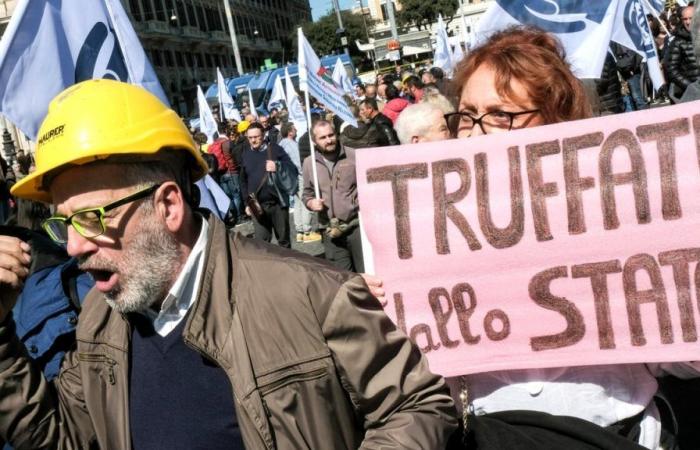The Superbonus is presenting its real cost: the bubble is ready to explode even if the effects on the economy have already been seen for some time. While the European Commission opens a procedure for excessive deficit, new data confirms the fears linked to the well-known subsidy for home renovation and, in general, to the building bonus system. For Bankitalia the net cost of the bonuses is 100 billion euros. They make around 1,700 euros each, for now. In the end they didn’t pay for themselves: for every point of GDP generated there were three of expenditure. The economic effects are confirmed, once again, also by the Parliamentary Budget Office and in the meantime thousands of companies are closing: it means that the situation can get even worse.
How much did the Superbonus really cost the State: new data from Bank of Italy
In two years, building bonuses – including facade bonuses and Superbonuses – have cost the State 170 billion euros. Of these, according to the latest Enea data, 122.7 billion concern the Superbonus. Supporters, such as Giuseppe Conte who with the 5 Star Movement was among the creators of the measure, have often argued that the expense to finance the renovation works would pay for itself.
A new study by Bank of Italy sees it differently: “The benefits for the economy as a whole in terms of added value were lower than the costs incurred for the benefits”. This means that the costs exceeded the benefits. The measures were were introduced in the second half of 2020 ”with the aim of stimulating the construction sector through targeted investments”. Initially, the amount of work started had actually pushed the GDP upwards, contributing to the economic recovery in the post-pandemic period.
The problem is that spending has far exceeded the growth produced. According to economists’ estimates, in the two-year period 2021-23 facade bonuses and super bonuses brought between 2.6 and 3.4 points of GDP out of 13.5 total points of growth, a contribution of between 20 and 25 percent. But if we compare these benefits to the total expenditure of 170 billion, every point of GDP gained cost three. It means that the net cost of Superbonuses and facade bonuses was 100 billion euros, approximately 1,700 euros each.
The problems arrived after the initial “blaze”: in 2023 “the deficit was higher than the 5.3 percent expected in the Nadef estimates from last September due, above all, to the effects of the Superbonus”, we read in the latest annual report of the Parliamentary Budget Office in Parliament, which led to the opening of the infringement procedure against Italy by the EU Commission. But these problems will still last due to the amount of tax credits still to be disposed of, so “unexpected effects cannot be ruled out in light of what has happened in past years”.
The “dead weight” of 45 billion given away
There is a good share of wasted investments in Superbonus spending. ”It is estimated that around a quarter of the expenditure relating to subsidized investments – over 45 billion – would have been carried out even in the absence of the incentives.” This means that 45 billion euros in renovations would have been carried out regardless of the building bonuses.
38 million euros for a single condominium: the latest madness of the Superbonus
In other words, a quarter of the total expenditure is to be considered a “deadweight loss”, as it was defined by Bankitalia researchers. This happened because anyone could access the measurement. The latest example came with the Pnrr funds dedicated to building bonuses: 13.7 billion of which half used for works on 46,922 houses. The rest went to condominiums, with a record intervention worth over 38 million euros for a building in Mezzana, a town of 890 inhabitants in the province of Trento.
Companies born and dead with Superbonus: the map of the crisis
After the initial burst, the Superbonus bubble exploded, precisely in the sector that had initially driven the economy. Nearly 11,000 construction companies have closed. They started the business at the end of 2020 and then closed it between 2022 and 2023. The trend is clear over time, as can be seen from the graph below from Today.it starting from an InfoCamere processing on the data from the Business Register.
Since the birth of the Superbonus, in mid-2020, as the months have passed, more and more companies have gone out of business. The trend visible in the graph is not random: at the end of 2022 the closed companies exceeded 1,700, and then reached over 3,000 exits at the beginning of 2023: these are precisely the months in which the regulations on companies carrying out the work become more stringent . In Lazio alone there were 1,171, of which 802 in Rome. The closures then continue in 2023 until reaching 10,924 terminations. Businesses born and died with Superbonus.






